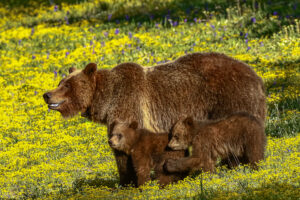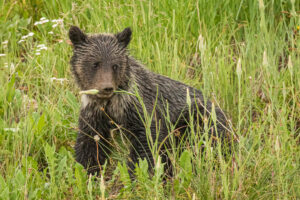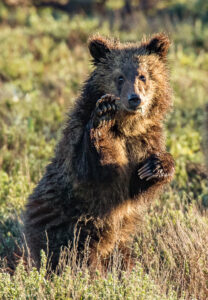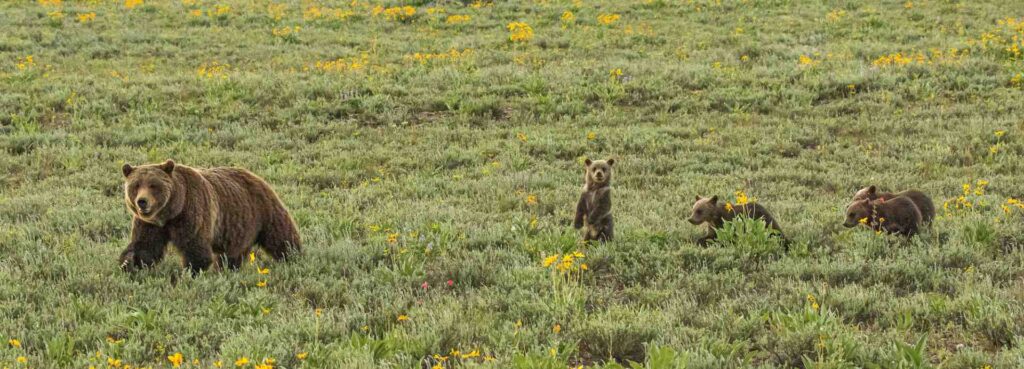Spring is the time of year we see mama bears emerge from their dens with cubs. During the second week of May in the Greater Yellowstone Ecosystem the sows will start to introduce their 1st year cubs to the world. The little cubs are seeing the outside world for the first time. When the cubs are born in January or February inside the den they are only 13 ounces, are mostly pink, have little fur and are relatively blind. Nature knows best, these babies would be bite sized snacks for large birds and other predators if they were not born in the protective den. They have the opportunity to fatten up and grow in February, March and April. This preparation helps the cubs have a better chance at survival in the harsh, real world.

The cubs have a relatively short gestation period, only 2 months. So if you are doing the backward math you may be asking yourself how would a bear mate while in hibernation. That is the interesting part, they don’t! Bears have a unique reproductive schedule. Bear mating season is in May and June, during this time 1-4 eggs may become fertilized. After fertilization the process is halted, the eggs do not implant in the uterus, they just hang out until hibernation begins in November or December. This allows the expecting mother to fatten up for the hibernation, birth and nursing of the cub or cubs, without the physical burden of growing cubs. This brief birds and the bears lesson brings us right back to spring.

While the bear cubs are acclimating to the new, outside environment they are also still relying heavily on their mother for nourishment. Bear cubs nurse until they are roughly 1 and a half years old. The mothers are also teaching their cubs very important foraging and hunting skills. Black bear cubs usually only stay with their mother for about a year and a half. Black bears are more reliant on vegetation, making their learning a bit less complex than grizzly cubs. They are ready to fend for themselves sooner. Grizzly bears will stay with their mother for about 2 and a half years. They need this extra time to learn about all the 220+ different food types they are known to consume. Grizzly bears consume plants, insects, fish and other mammals, and are more reliant on meat than their black bear relatives.

If you are interested in learning more about bears or other wildlife in the Greater Yellowstone Ecosystem our expert Wildlife Expeditions guides can answer all of your questions. They are lifelong educators ready to help you understand this magical place, and possibly spark new curiosities.

All photos courtesy of Suzanne Daniel.


